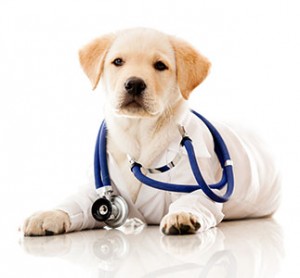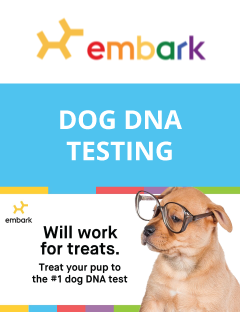Early Detection is Key: Ten Warning Signs of Cancer in Dogs and Cats
 Gabriella Sfiligoi, DVM, DACVIM (Oncology) at Wheat Ridge Animal Hospital
Gabriella Sfiligoi, DVM, DACVIM (Oncology) at Wheat Ridge Animal Hospital
Over the past few decades, consistent improvements in small animal healthcare have resulted in longer lives for many companion animals. Unfortunately, as more dogs and cats reach older age, cancer diagnoses have become more common. It has been estimated that approximately 10% of dogs and 18% of cats in the United States will be diagnosed with cancer each year. Other estimates indicate that up to 50% of dogs over the age of ten will die from cancer.
Just like in humans, early detection of cancer can dramatically improve survival by identifying cancer in its earliest stages before it is wide spread. Therefore, increasing the chance of a cure in our pets. Veterinary oncologists are often asked what signs pet owners can look for that may indicate the presence of cancer. Of course, clinical signs vary greatly depending on the type, location, and extent of cancer in a particular patient. The American Veterinary Medical Association has published the following list of ten common clinical signs that MAY indicate that a pet has cancer.
1) Abnormal swellings that persist or continue to grow.
Not all swellings are tumors. A pet may, for example, develop a swelling after trauma. However, traumatic swellings often improve or resolve over a two-week period. Any mass or swelling that persists for greater than three weeks or shows continued growth, even over a shorter period of time, should be evaluated by a veterinarian. A simple test called a fine needle aspirate can help distinguish if lesions are cancerous, infectious, or inflammatory. This test involves inserting a small needle into the mass to remove cells. The cells are then sprayed onto a slide and examined under the microscope. One of the most common tumors diagnosed this way is a tumor of the skin called a lipoma which is a benign growth of fatty tissue and usually is not clinically significant.
2) Sores that do not heal.
Most uncomplicated traumatic lesions will heal within two to three weeks’ time. Sores that have not healed in this period of time should be evaluated by a veterinarian as there may be underlying cancer or infection that is preventing healing.
3) Unexplained weight loss.
Patients who are eating normally but are continually losing weight may have one of a variety of disorders including metabolic abnormalities, nutritional abnormalities or cancer.
4) Loss of appetite.
A single skipped meal usually is not cause for concern. However, when a dog or cat persistently has a poor appetite, especially for their favorite foods, an evaluation is warranted. It is important to remember that this clinical sign is very non-specific and can be seen with a wide variety of conditions.
5) Bleeding or abnormal discharge from any body opening including the mouth, eyes, ears, nose, or in the urine or stool.
6) Offensive odor.
This pertains especially to the mouth or to a non-healing wound. An offensive odor can indicate the presence of infected or otherwise unhealthy tissue.
7) Difficulty eating or swallowing.
8) Hesitation to exercise or loss of stamina that is persistent or is progressive over time.
9) Persistent lameness or stiffness. Many different conditions including arthritis, muscle strains, bony malformations, and cancer can cause limb pain. A thorough orthopedic exam is required to localize pain. X-rays may be needed to diagnose the underlying problem.
10) Difficulty breathing, urinating, or defecating.
These signs often constitute an emergency for your pet and should be evaluated as soon as possible.
It is important to remember that there are many possible explanations for these signs in pets. Seeing one of these signs does not mean that a pet has cancer. However, these common signs may indicate a significant problem. Owners concerned about any of these signs should have their pet evaluated by their veterinarian.
If a tumor is found, remember that there are many treatment options available for pets with cancer today including surgery, chemotherapy, radiation therapy, and immunotherapy. The primary goal of cancer therapy is always to improve or preserve an excellent quality of life for your pet. As a result, these treatments are typically very well tolerated in dogs and cats. Watching for the signs discussed here and having your pet evaluated early can lead to early cancer detection, increasing the likelihood of successful treatment for your pet.
For more information: visit www.wheatridgeanimal.com







